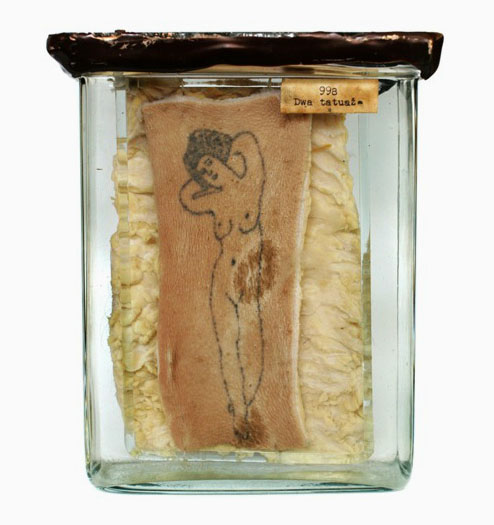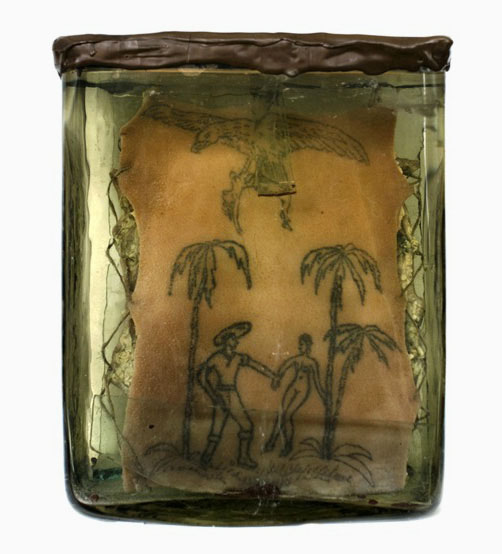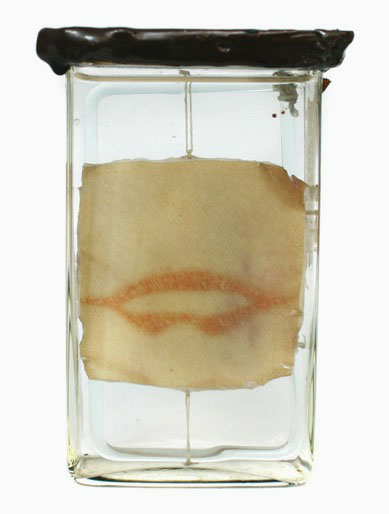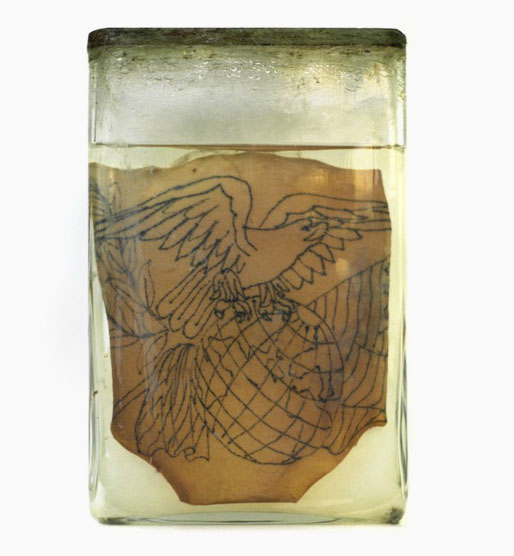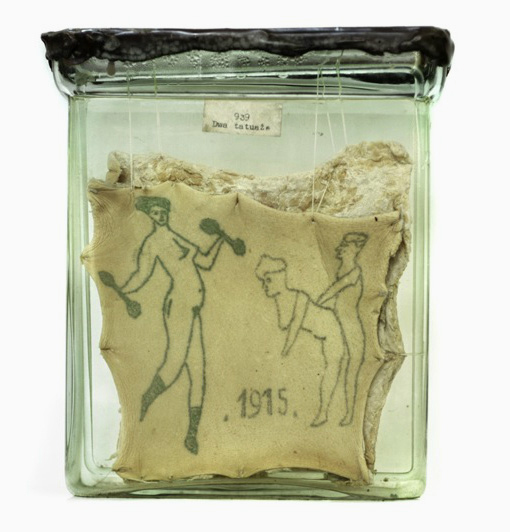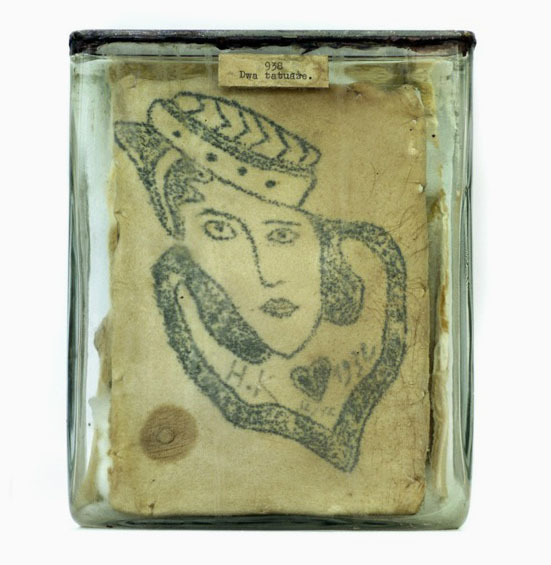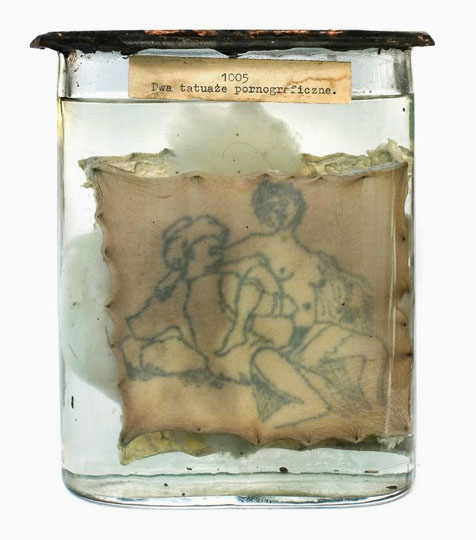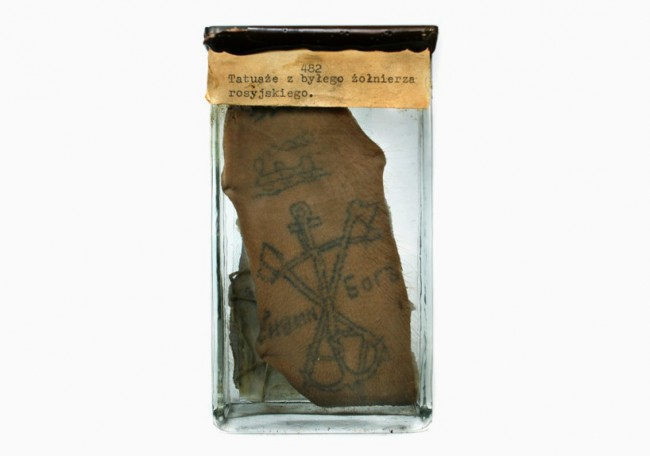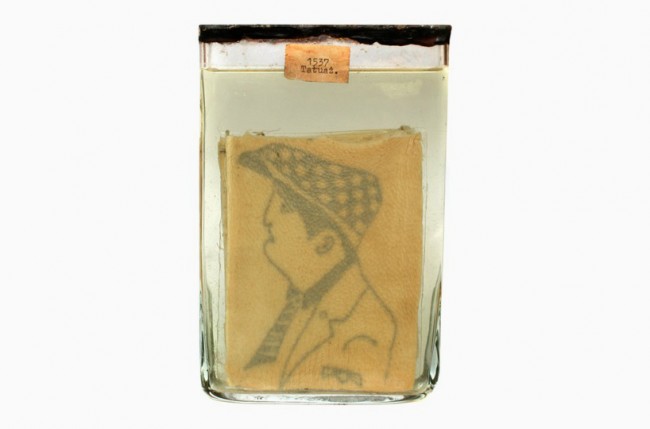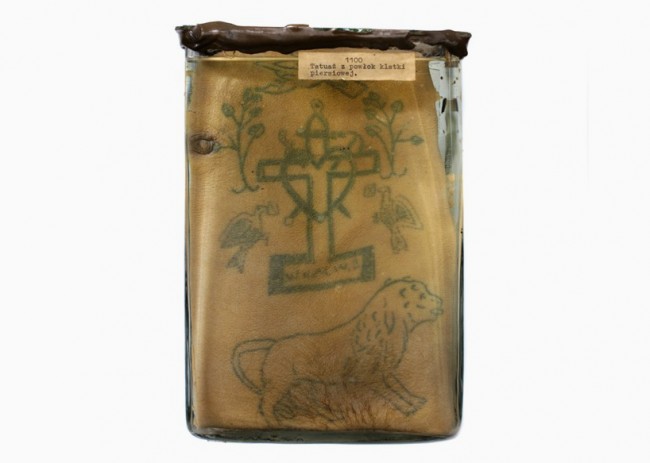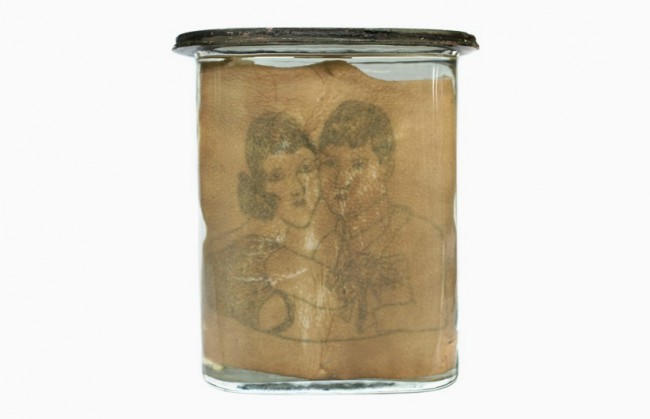Presenting an alternative view on social issues such as exclusion, crime and punishment, Polish artist Katarzyna Mirczak has photographed tattoo-covered skin specimens sourced from deceased prisoners in Poland. Cataloged from the body art archive at the department of forensic medicine at Jagiellonian University in Krakow, Poland, the 60 extractions are carefully preserved in formaldehyde, sheltered within a glass jar to reveal their design. Often, prison tattoos represent connections between the convicts, acting as a kind of secret criminal code; the series was motivated by the aim to decipher this hidden language by looking closely at repeated symbols and motifs. Based on their emblematic signs, the past, place of residence or the criminal group in which the individuals were involved could be determined.
story via Designboom
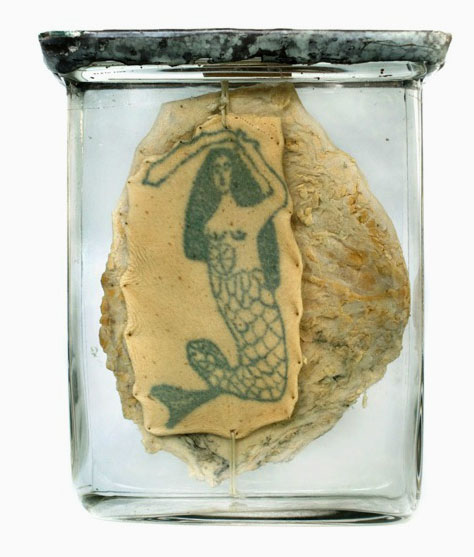
a preserved tattoo on skin depicts the illustration of a mermaid
Conditions in prisons allowed only for the use of only primitive and often dangerous tools to be used in tattooing: paper clips, pins, wires, razor blades and pieces of glass were required to puncture the skin, while charcoal, burned rubber, cork, pencil refills, ink and crayons acted as color pigments, often mixed with water, urine or soap.
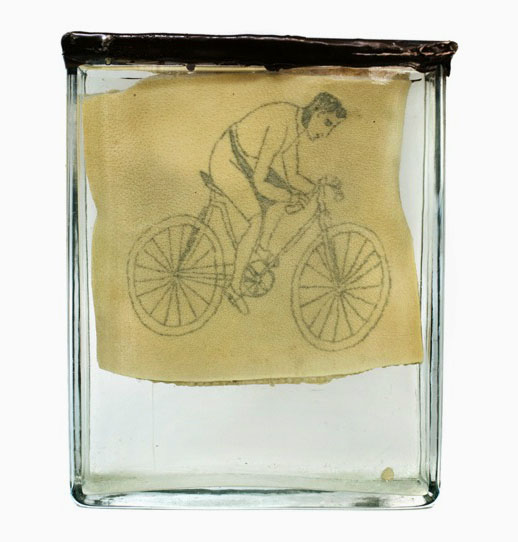
a bicycle tattoo sourced from a deceased prisoner
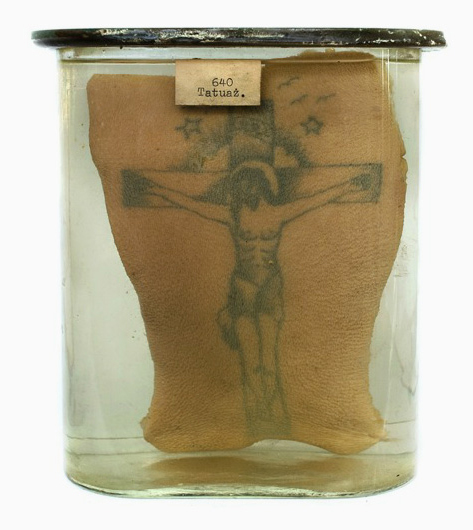
the catalog aims to decipher the hidden language between prisoners


